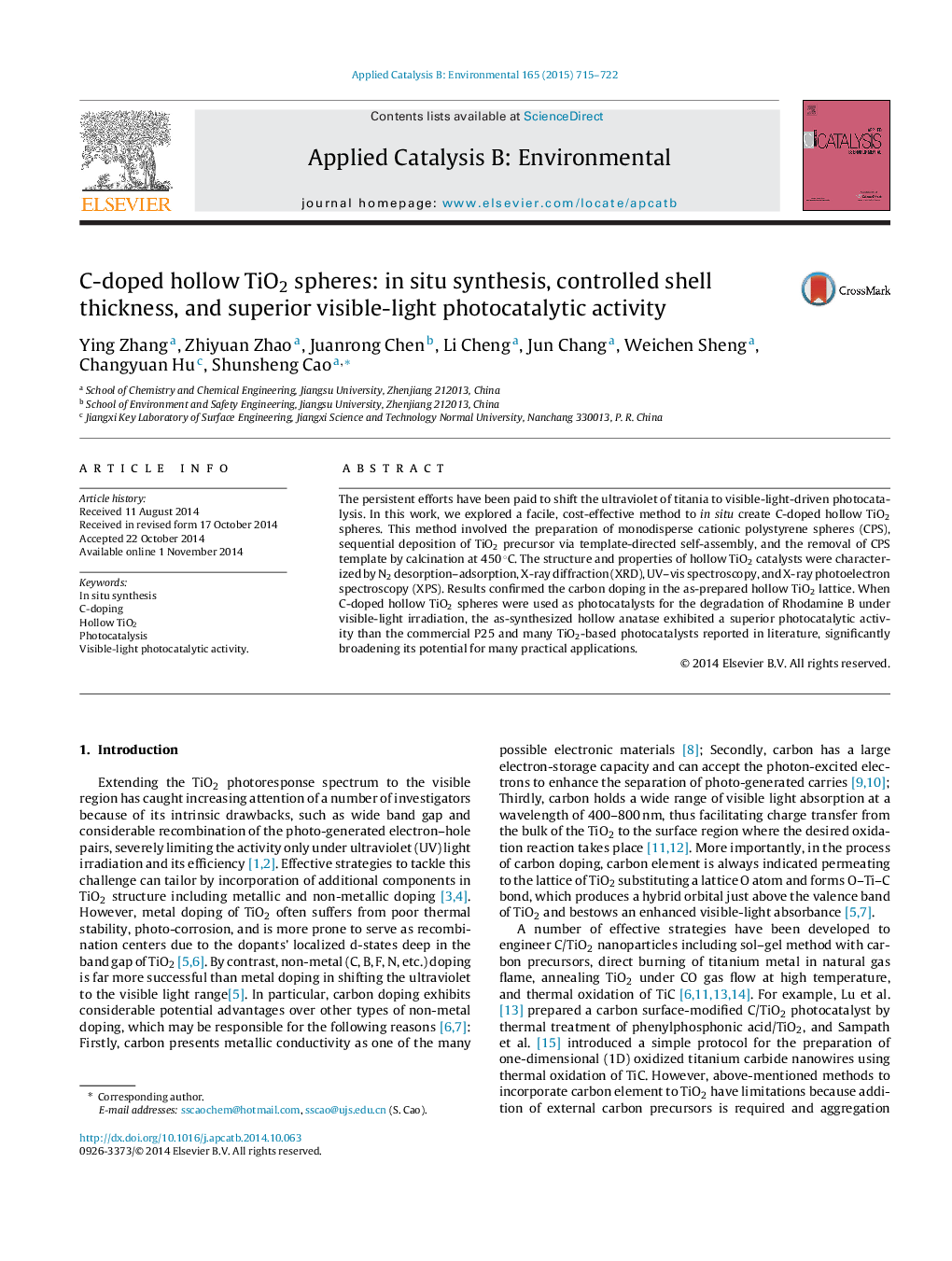| Article ID | Journal | Published Year | Pages | File Type |
|---|---|---|---|---|
| 45605 | Applied Catalysis B: Environmental | 2015 | 8 Pages |
•A facile, cost-effective method was introduced to develop ordered hollow TiO2 spheres.•C-doped hollow TiO2 (C/TiO2) was in situ prepared via template-guided self-assembly.•The shell thickness of C/TiO2 could be adjusted by changing the addition amount of TBT.•C/TiO2 manifested a superior visible-light photocatalytic activity.
The persistent efforts have been paid to shift the ultraviolet of titania to visible-light-driven photocatalysis. In this work, we explored a facile, cost-effective method to in situ create C-doped hollow TiO2 spheres. This method involved the preparation of monodisperse cationic polystyrene spheres (CPS), sequential deposition of TiO2 precursor via template-directed self-assembly, and the removal of CPS template by calcination at 450 °C. The structure and properties of hollow TiO2 catalysts were characterized by N2 desorption–adsorption, X-ray diffraction (XRD), UV–vis spectroscopy, and X-ray photoelectron spectroscopy (XPS). Results confirmed the carbon doping in the as-prepared hollow TiO2 lattice. When C-doped hollow TiO2 spheres were used as photocatalysts for the degradation of Rhodamine B under visible-light irradiation, the as-synthesized hollow anatase exhibited a superior photocatalytic activity than the commercial P25 and many TiO2-based photocatalysts reported in literature, significantly broadening its potential for many practical applications.
Graphical abstractFigure optionsDownload full-size imageDownload as PowerPoint slide
